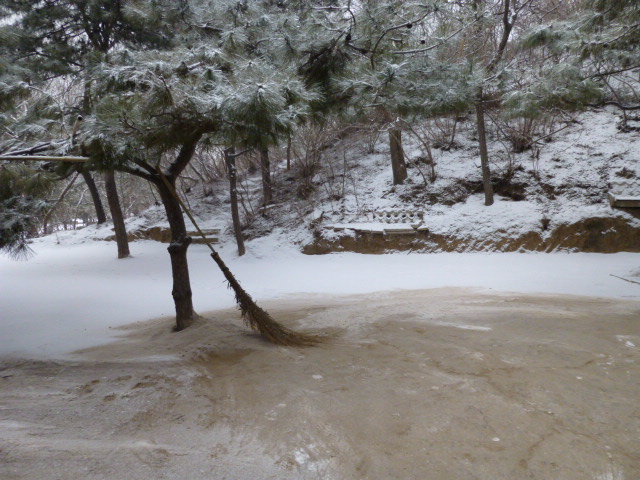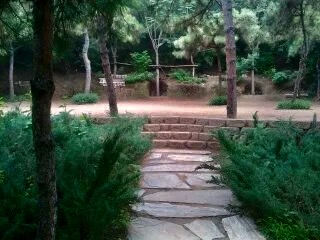One topic that seems to come up frequently in threads discussing various traditional martial arts is the idea of original intent. What was the original purpose of a certain technique? What knowledge wasn't passed down from the old masters to modern practitioners? What was the intention behind particular movements in a kata. Which lineage retains the secret teachings of the founder? Who is qualified to change the way a particular aspect of the art is taught?
It's all very interesting from an outside perspective, but very alien to my personal experience.
I train multiple arts, but my home base is BJJ. And BJJ is an art in a constant state of evolution.
I'm not talking just about the development of new techniques and tactics which are primarily aimed at sport competition under the standard BJJ tournament rules. Since I primarily train BJJ as a fighting art, I could ignore those if I wanted. I'm talking about things like the body mechanics behind fundamental techniques and basic tactical doctrine applicable to both street self-defense and MMA. Much of what I learned when I started BJJ 26 years ago is no longer considered best practices. This is the result of BJJ moving from a niche art dominated by a single family to an art practiced internationally by millions of people worldwide. Those people are continually experimenting, trying everything from minor technical tweaks to established moves, to brand new techniques and tactics, to new ways to conceptualize and teach the movements. And these changes are being tested - in grappling competitions, in MMA, in self-defense, in law-enforcement, and so on. And then the methods which seem to work best are shared via video for practitioners around the world to learn and test and potentially improve on.
All of which leads to a situation where I, having been a BJJ black belt for 11 years now, often feel like an imposter. Not because I didn't learn the details of the original techniques taught by Helio Gracie. But because I can't keep up with the continued development of the art. Honestly, it would be difficult even for someone who trains full time to keep up with everything. But I'm 60 years old with a day job. I'm only on the mats for about 6 hours per week these days and I spend about 1-3 hours per week watching video in an effort to keep up my continuing education on what the worldwide BJJ laboratories are coming up with.
I deal with this by focusing my efforts on the technical details which improve the efficiency of the fundamental movements that I've already been training for years, concepts which help me understand and implement those moves, improved methods for teaching, and new techniques only when they offer a lot of bang for the buck in terms of complementing my existing repertoire and don't require a lot of athleticism or time to make functional. That still leaves a ton of new developments that I try to monitor enough to be sort of aware of, but don't really have any kind of in-depth understanding or mastery of.
It does feel like a bit of a Red Queen's race. (For the non-Carroll fans, that refers to a situation where you have to run as fast as you can just to stay in the same place. ) But at least I'll never have to worry about getting bored or thinking that I know everything.
It's all very interesting from an outside perspective, but very alien to my personal experience.
I train multiple arts, but my home base is BJJ. And BJJ is an art in a constant state of evolution.
I'm not talking just about the development of new techniques and tactics which are primarily aimed at sport competition under the standard BJJ tournament rules. Since I primarily train BJJ as a fighting art, I could ignore those if I wanted. I'm talking about things like the body mechanics behind fundamental techniques and basic tactical doctrine applicable to both street self-defense and MMA. Much of what I learned when I started BJJ 26 years ago is no longer considered best practices. This is the result of BJJ moving from a niche art dominated by a single family to an art practiced internationally by millions of people worldwide. Those people are continually experimenting, trying everything from minor technical tweaks to established moves, to brand new techniques and tactics, to new ways to conceptualize and teach the movements. And these changes are being tested - in grappling competitions, in MMA, in self-defense, in law-enforcement, and so on. And then the methods which seem to work best are shared via video for practitioners around the world to learn and test and potentially improve on.
All of which leads to a situation where I, having been a BJJ black belt for 11 years now, often feel like an imposter. Not because I didn't learn the details of the original techniques taught by Helio Gracie. But because I can't keep up with the continued development of the art. Honestly, it would be difficult even for someone who trains full time to keep up with everything. But I'm 60 years old with a day job. I'm only on the mats for about 6 hours per week these days and I spend about 1-3 hours per week watching video in an effort to keep up my continuing education on what the worldwide BJJ laboratories are coming up with.
I deal with this by focusing my efforts on the technical details which improve the efficiency of the fundamental movements that I've already been training for years, concepts which help me understand and implement those moves, improved methods for teaching, and new techniques only when they offer a lot of bang for the buck in terms of complementing my existing repertoire and don't require a lot of athleticism or time to make functional. That still leaves a ton of new developments that I try to monitor enough to be sort of aware of, but don't really have any kind of in-depth understanding or mastery of.
It does feel like a bit of a Red Queen's race. (For the non-Carroll fans, that refers to a situation where you have to run as fast as you can just to stay in the same place. ) But at least I'll never have to worry about getting bored or thinking that I know everything.


